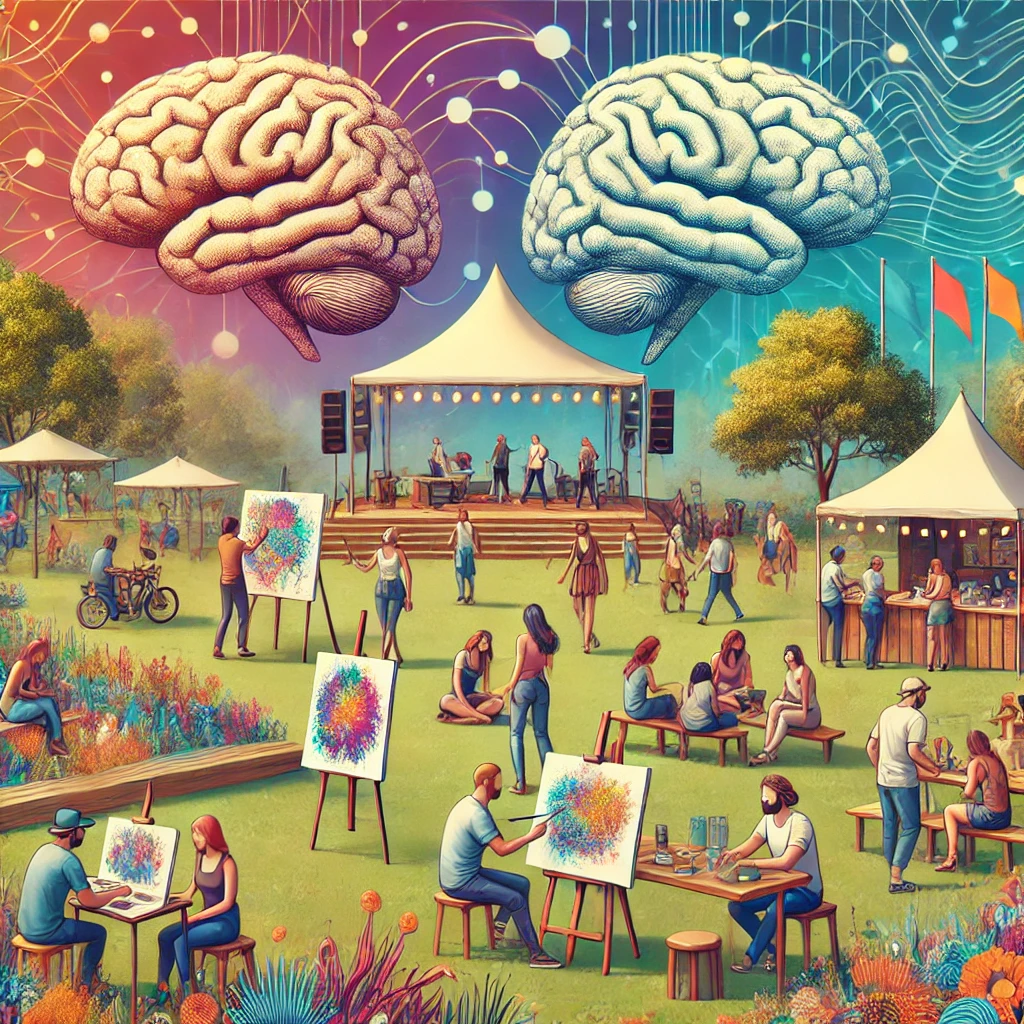
Art festivals are more than just a gathering of artists and enthusiasts; they are a complex blend of creativity, psychology, and sociology. At Unifesto, we delve deep into the science behind our festival of art to understand what makes it such a transformative experience for attendees. From the neurological impact of art to the social dynamics at play, here’s a look at the fascinating science behind a festival of art.
When we engage with art, whether by creating it or simply appreciating it, our brains undergo significant changes. Neuroscientific studies have shown that viewing art can activate the brain's reward system, releasing dopamine, the "feel-good" neurotransmitter. This reaction is similar to the pleasure we get from other rewarding activities like eating or listening to music.
Creating art, on the other hand, engages multiple brain regions, including those responsible for fine motor skills, problem-solving, and emotional regulation. This multisensory engagement not only enhances cognitive functions but also promotes mental well-being by reducing stress and anxiety.
Art festivals provide a unique environment where individuals can experience the psychological benefits of both creating and observing art. The immersive nature of these festivals allows attendees to escape their everyday stresses and enter a space of creativity and inspiration. This temporary disconnection from daily routines can have profound therapeutic effects, contributing to improved mental health and emotional resilience.
Moreover, art festivals like Unifesto foster a sense of community and belonging. Participating in communal art activities and sharing artistic experiences with others can enhance social bonds and reduce feelings of isolation. This social connection is crucial for overall mental health and well-being.
From a sociological perspective, art festivals serve as a microcosm of society, reflecting and influencing social dynamics. These events bring together people from diverse backgrounds, fostering cultural exchange and mutual understanding. This diversity not only enriches the artistic experience but also promotes social cohesion and inclusivity.
Art festivals also act as platforms for social change. By showcasing thought-provoking works that address societal issues, festivals can inspire dialogue and action. At Unifesto, we believe in the power of art to drive positive change and encourage attendees to engage with critical social topics through creative expression.
Beyond the psychological and social benefits, art festivals have a significant economic impact. They attract visitors, generate revenue for local businesses, and create job opportunities. The influx of tourists and art enthusiasts stimulates the local economy, benefiting hotels, restaurants, and other service industries.
Furthermore, art festivals can boost the profile of emerging artists, providing them with exposure and opportunities to sell their work. This economic support is vital for sustaining the arts and encouraging the next generation of creative talent.
The setting of an art festival plays a crucial role in shaping the experience. Natural environments, such as parks and gardens, can enhance the sensory experience of art by providing a serene and aesthetically pleasing backdrop. Studies have shown that exposure to nature can reduce stress and improve mood, amplifying the positive effects of the festival.
At Unifesto, we carefully select our venues to create an immersive and harmonious environment. By integrating art with nature, we aim to provide a holistic experience that nurtures the mind, body, and soul.
The science behind a festival of art is a fascinating interplay of neurological, psychological, sociological, and economic factors. At Unifesto, we are dedicated to understanding and leveraging these elements to create a transformative experience for our attendees. By exploring the science behind our festival, we can continue to innovate and enhance the impact of art on individuals and communities. Join us at Unifesto and experience the magic of art through the lens of science.